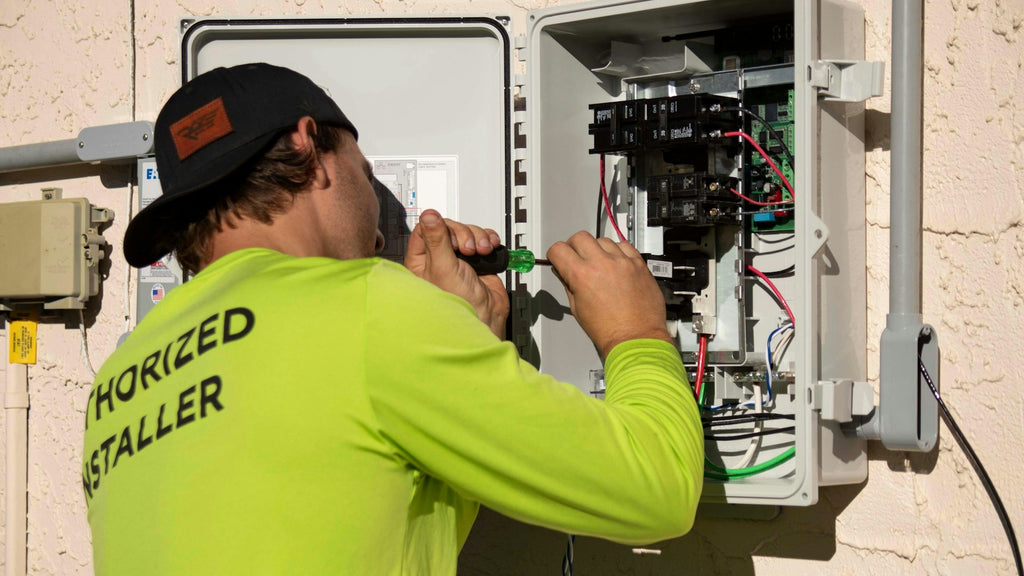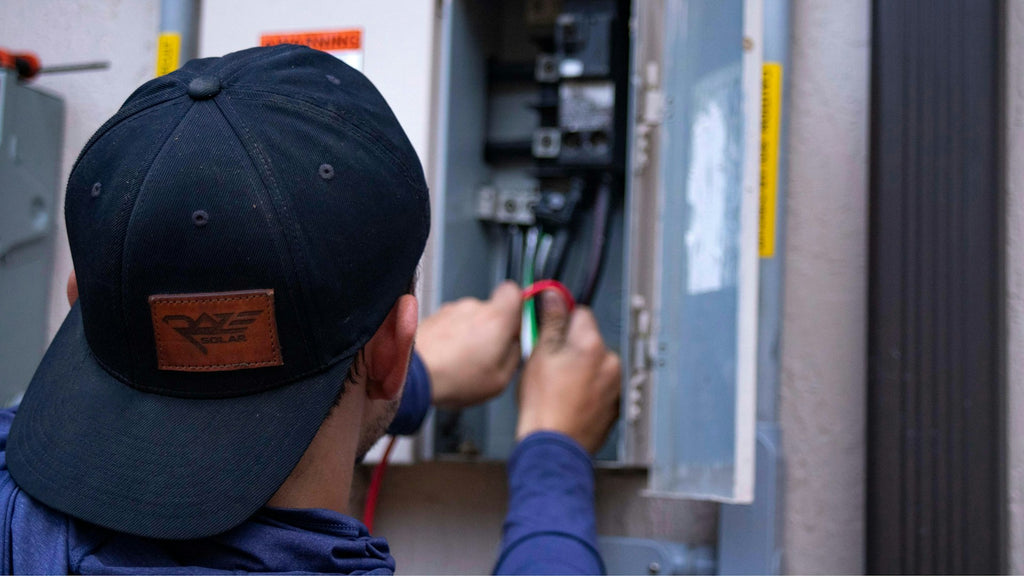
Solar Inverter Troubleshooting: 8 Common Problems and Easy Solutions
Ever wondered why your solar inverter doesn't work? We are here to put your mind at ease! This guide provides straightforward troubleshooting strategies for common solar inverter issues, covering reasons for failure, like overheating, electrical surges, and installation errors. It outlines simple fixes for no power output, overheating, and erratic behavior, among other problems, and highlights when it's essential to seek professional assistance, ensuring owners in Germany can effectively maintain their solar inverter systems.
Why Solar Inverters Fail?
Solar inverters fail due to overheating, electrical surges, defects, improper installation, aging, firmware issues, environmental exposure, and using poor or incompatible components. Overheating and surges damage components, while defects and installation errors prevent proper operation. Aging leads to natural degradation, firmware problems can cause malfunctions, and harsh environments or unsuitable components strain the system, all contributing to failure.

8 Common Problems That Solar Inverters May Face
1. No AC or DC Power Output
Your inverter seems lifeless, with no signs of activity on its display, which usually indicates it's not receiving or converting power.
Start by inspecting your circuit breakers or fuses for any that have tripped or blown-a common culprit behind power issues. Next, verify that your solar panels are indeed capturing sunlight and generating electricity by measuring the DC voltage arriving at the inverter. This step ensures the problem lies with the inverter or connections, not the panels themselves.
2. Inverter Overheating
The inverter turns off or loses efficiency, a sign it's running too hot.
Good airflow is key to keeping your inverter cool. Make sure there's enough space around it for air to circulate freely, remove any objects blocking its vents, and consider adding external fans or relocating it to a cooler spot if overheating persists.

3. Erratic Behavior or Error Codes
If your inverter is acting up, displaying error codes or functioning unpredictably, it's signaling a problem.
Each inverter has a manual detailing error codes and what they signify. Look up any codes you're seeing. Some might only require you to restart the inverter, while others could indicate the need for repairs or a software update.
4. Ground Fault or Leakage Current
The inverter shuts down due to detected ground faults or abnormal current leaks, designed to prevent equipment damage.
Check your entire solar array for damaged wires, connections, or panels where water might infiltrate or insulation could be compromised. Fix or replace damaged parts to resolve leakage issues.
5. Low Performance or Efficiency
Despite favorable conditions, the inverter isn't producing as much power as expected.
Verify that your system is properly set up and configured. Make sure solar panels aren't shaded and are clean from debris. Confirm all system components are matched for compatibility and working as intended. Sometimes, a simple adjustment or cleaning can significantly impact performance.
6. Communication Failures
The inverter isn't communicating with your monitoring equipment or display, leaving you in the dark about its performance.
Secure all connections between your inverter and monitoring devices. A reset of the communication settings or a firmware upgrade might be necessary. Damaged cables or components should be replaced to restore communication.
7. Intermittent Shutdowns
The inverter randomly powers off and restarts, disrupting energy production.
This issue often stems from overheating, fluctuating grid voltage, or instability. Ensure your inverter has sufficient ventilation, check for consistent grid voltage, and adjust settings to match grid specifications to prevent random shutdowns.
8. Battery Charging Issues (For Hybrid Inverters)
The inverter isn't charging the battery effectively, or the battery loses charge too quickly.
Inspect the battery connections for any loose or damaged wires and assess the battery's overall condition. The battery must be suited to your inverter's specifications, and all settings should be correctly adjusted for optimal charging. Consider replacing the battery if it's old or shows signs of significant wear.
When to See a Professional If Your Solar Inverter Fails
- If persistent error messages or codes that you can't resolve with basic troubleshooting appear on the inverter display.
- If there's a significant and unexplained drop in energy production or efficiency, indicating potential internal issues.
- If visible damage, such as burn marks, corrosion, or physical defects, is present on the inverter unit.
- If the inverter repeatedly shuts down or restarts without clear reason, suggesting deeper electrical or firmware problems.
- If you notice unusual noises or smells coming from the inverter, which could indicate overheating or electrical faults.
- If the system's safety features, like ground fault protection, trigger without an obvious cause, pointing to possible electrical issues.
- If firmware updates are needed and you're not confident in performing them yourself, to avoid accidental damage.
- If your troubleshooting attempts have not improved the situation, to prevent further damage or inefficiency.

FAQs about Solar Inverter
Why does my solar inverter display a "low input voltage" error even on sunny days?
A "low input voltage" error indicates that the inverter is not receiving sufficient DC voltage from the solar panels to convert into AC power. This could be due to several reasons, such as partial shading on one or more panels, a poor connection between panels, or a fault in the solar panels themselves. To resolve this, check for any shading issues and inspect the connections between your panels for damage or corrosion. You might also need to test individual panels to identify if one is underperforming.
My inverter keeps disconnecting from the grid. What could be causing this?
Inverters may disconnect from the grid due to safety features that detect abnormalities in grid voltage or frequency. Such disconnections can be triggered by grid instability or by the inverter settings not being properly configured to match the grid's parameters. First, verify the grid's voltage and frequency are within the expected range. Then, check your inverter's settings to ensure they align with your utility's requirements. If the problem persists, it might be necessary to consult with both your inverter manufacturer and your energy provider.
How do I know if my solar inverter is not converting energy efficiently?
Inefficiency in energy conversion can often go unnoticed. However, signs include lower-than-expected electricity production or an unusually high discrepancy between the power your panels are generating and what your inverter reports converting. To assess efficiency, compare the DC input (from your panels) to the AC output (from your inverter) over a sunny day. Significant losses might indicate conversion inefficiency. In such cases, ensure your inverter is properly sized for your system and check for any errors or faults indicated by the inverter.
Can I repair my solar inverter by myself if it's out of warranty?
Attempting to repair a solar inverter without professional training is not recommended due to the complex and potentially dangerous nature of electrical components. However, simple tasks such as resetting the inverter, updating its firmware, or checking connections can be done safely. For more complex issues, especially those involving internal components, it's best to consult with a professional technician or consider replacing the unit.
How often should I inspect or service my solar inverter?
Regular inspections are key to maintaining your solar inverter's performance. It's recommended to perform a visual check for any obvious issues like damage or dust buildup every few months. A more thorough inspection and cleaning by a professional should be done annually. This ensures that any potential issues can be identified and addressed early on, preventing larger problems down the line.
What should I do if my inverter is producing power but my electricity bills haven't decreased?
If your inverter seems to be working but you're not seeing savings, first ensure that your system's production matches your expectations through monitoring. Check your electricity bills for proper net metering credits if applicable. Consider your energy usage patterns; using more electricity during peak sun hours can maximize your savings. If discrepancies continue, it may be worth consulting with your system installer or conducting an energy audit to identify any inefficiencies in your home.

Leave a comment